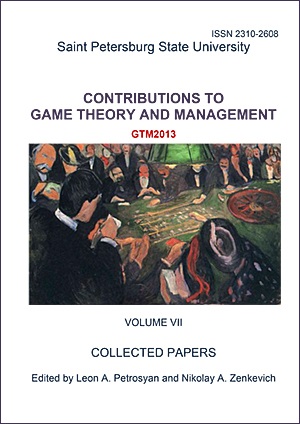Quality Level Choice Model under Oligopoly Competition on a Fitness Service Market
Abstract
The growth of complexity of business conditions causes the necessity of innovative approaches to strategic decision-making, instruments and tools that help them to reach the leading position in mid-term and long-term perspective. One of the instruments that allow increasing company's competitiveness is the improvement of the service quality. The goal of the research is to develop theoretical basis (models) and practical methods of the service quality level evaluation and choice which is made by the service provider. Research objectives are: analysis of consumer satisfaction with the service, development of game-theoretical models of service providers' interaction, definition of the strategy of service quality level choice, development of practical recommendations for Russian companies to implement the strategy.
Keywords:
quality choice, willingness to pay, exponential distribution, two-stage game, Nash equilibrium, optimal quality differentiation, fitness industry
Downloads
References
Downloads
Published
How to Cite
Issue
Section
License
Articles of "Contributions to Game Theory and Management" are open access distributed under the terms of the License Agreement with Saint Petersburg State University, which permits to the authors unrestricted distribution and self-archiving free of charge.




